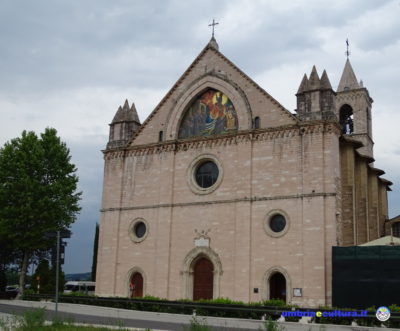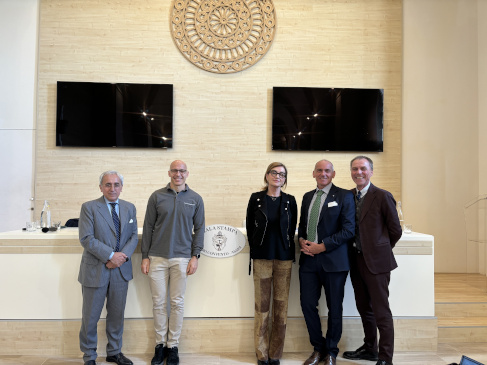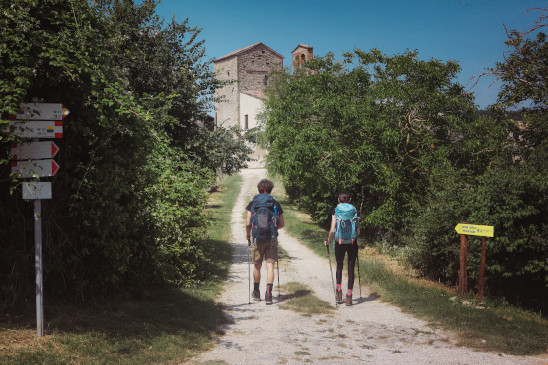Passing quickly along the road from Perugia to Foligno, when the eyes are still full of the view of Assisi, wonderful on the slopes of Mount Subasio, with its load of history and sacredness, the gaze rests on the neo-Gothic shape of the Franciscan Sanctuary of Rivotorto, born to protect the Sacred Hovel, of the small and miserable building that saw the birth of the order of the Friars Minor.
“Hic primordia Fratrum Minorum” reads the inscription on the entrance portal of the church with three naves; on the lunette is represented the “Miracle of the Chariot of Fire”, which happened in this place: Francesco appeared to his brothers on board a chariot of fire that circled three times inside the hovel, while in reality he was in Assisi waiting to be received in audience by the Bishop, Guido II.
In this small shelter, consisting of two small rooms with a low ceiling, Francesco and the first two brothers who followed him (Bernardo and Pietro Cattani) found refuge. It was a small hut, a hut with a roof of branches, used as a shelter by the local farmers, stripped of all furnishings, so much so that the brothers had rest on the ground, with a stone as a cushion, to live the Gospel in absolute and rigorous poverty. Over time, other brothers joined the small group, so much so that they could hardly find refuge within the poor walls.
It was from the Sacred Hovel that Francis moved to Rome, together with a dozen of his confreres, in 1209, to ask for and obtain the first oral approval of the Franciscan rule from Pope Innocent III.
The Sacred Hovel in Rivotorto was the home of Francesco and his companions for about three years, from 1208 to 1211, when, now growing in number, they moved to the Porziuncola, a few kilometers away.
For more than two centuries the hovel remained a humble home, mostly used by friars who wanted to lead a hermit life.
In 1455, with the permission of the Bishop, a “Majesty” was built to celebrate the Eucharist until, in the seventeenth century, the largest church was built, with an adjoining convent.
The building we can see today was built in the 19th century, after the destruction of the previous one due to a serious earthquake in 1854.
Benedetta Tintillini
Find the Sacred Hovel on Google Maps:



